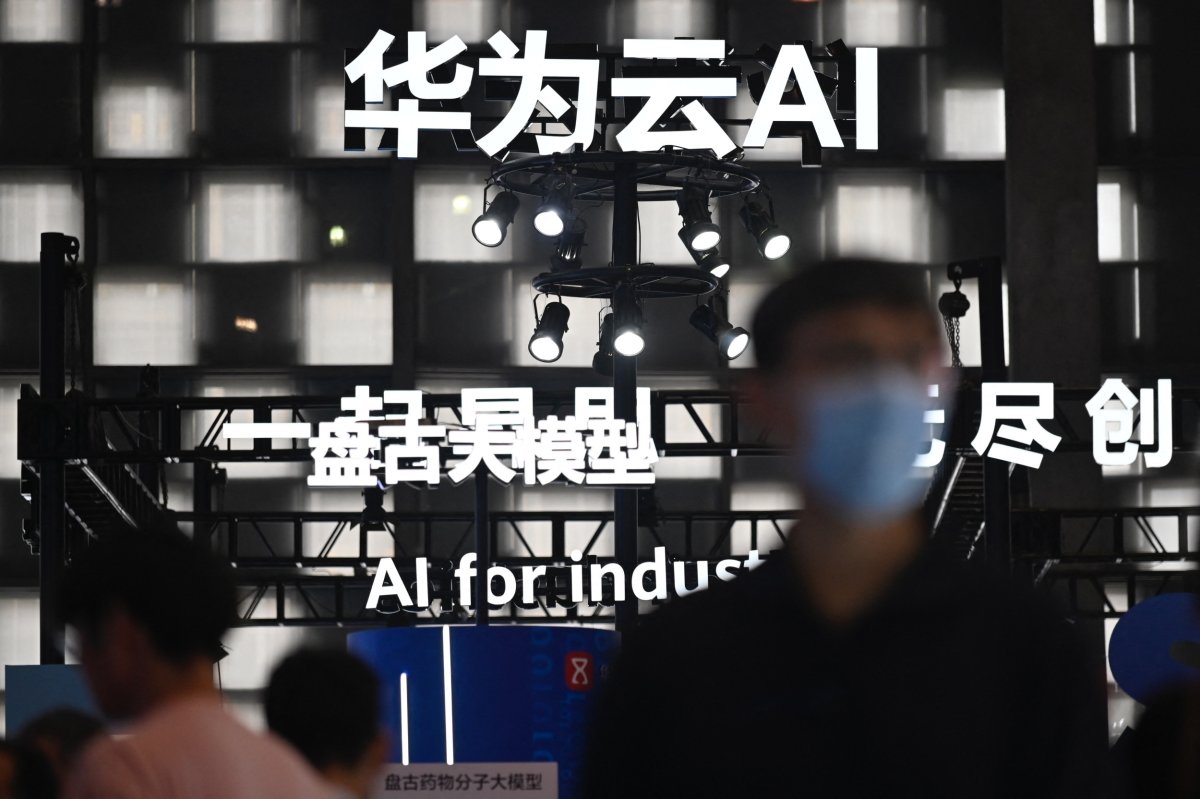David P. Goldman
Last November, Newsweek uncovered $30 million in federal research grants which had gone to Chinese AI researcher Song-Chun Zhu, who had received National Science foundation and Defense Department funding while working for Chinese institutions with reported ties to the Chinese military. The exposé led to an inquiry by several House committees, announced on Jan. 17.
I won't second-guess the House investigators or pre-judge the case, but the Zhu affair points to a much bigger problem: China already has decisive advantages in critical data and their application to Artificial Intelligence, making it hard for American researchers to eschew collaboration with China in key fields like medical research and industrial automation. China now graduates more engineers and computer scientists than the rest of the world combined, and it's hard to conduct AI research without Chinese researchers. Trickiest of all is that China—in sharp contrast to the United States—steers its top computer science graduates toward its military industry. The most qualified Chinese specialists are likeliest to have military ties. China lavishes high pay and benefits on top graduates who join its defense industries.
All of which is to say, we need to strike a balance between safeguarding national security and cutting off access to indispensable data, talent, and state-of-the-art practice. There's a fine line between protecting American secrets—and stifling research by excluding the world's biggest pool of data and the talent that analyzes it.
After the Soviet Union surprised the world with the Sputnik launch in 1957, the Eisenhower Administration enacted the National Defense Education Act. This bore fruit during the 1960s, when a burgeoning generation of scientists and engineers backed by NDEA staffed the Apollo program. Military and aerospace hired America's best and brightest.

People visit the AI produce during World Artificial Intelligence Conference (WAIC) in Shanghai on July 7, 2023.
This is no longer the case in the U.S. Today, the Big Tech money machine has its pick of top graduates. They don't just avoid the military, either; in 2018, thousands of Google personnel boycotted the company's imaging work for the Defense Department. According to chip consultant Handel Jones, programming technologies within the military and aerospace AI projects are "several generations behind the Silicon Valley standard.
Even by the numbers, we're lagging. The National Science Board reports that the U.S. awarded 127,000 Bachelor's Degrees in engineering and 105,000 in computer science in 2021. That's just one-sixth of China's 1.4 million engineering graduates that year. Only 6 percent of American undergrads major in engineering, because the grade schools don't produce enough qualified candidates. The U.S. aerospace and defense industry can't hire Stanford or MIT graduates—they are picked off by Google or Microsoft—yet second-tier engineering schools can't find students. Colorado State's and Michigan State's engineering schools accept 71 percent of applicants, while Arizona State takes 86 percent.
And Chinese schools are close to par with the U.S. in quality, having all but caught up in the last 10 years.
The sad reality is that American R&D depends on foreign students, and a lot of them will be Chinese (India has a few top engineering schools, but a third of them already go abroad). And the top Chinese graduates probably will have worked for China's military industry.
The solution, of course, is education reform. To teach high school math in Europe, you need a proper B.A. in math, not a degree in "education." We also need to pay math teachers more than gym teachers, which is tough to do when the teachers' unions are run by gym teachers. Still, even if we waved a magic wand and reformed the educational system overnight, it would take a dozen years for the supply of qualified personnel to affect the workforce.
We don't have a dozen years. China may not produce the fastest computer chips (although it has shown ingenuity in working around American tech sanctions). But it has far more experience in some critical applications of Artificial Intelligence. With 70 percent of the world installed 5G capacity, China is far ahead of the U.S. in AI-guided transportation, with fully automated ports that can unload a container ship in an hour rather than the day it takes at America's biggest port of Long Beach. Huawei claims to have 10,000 customers for private 5G networks that control industrial robots, monitor machines for preventive maintenance, perform quality control on conveyor belts, and in some cases program themselves for industrial processes. I know of only three U.S. manufacturers with dedicated 5G networks—Ford, GM, and John Deere.
With this head start comes a wealth of data. If computation is the engine of the AI revolution, data is its fuel. As Maximilian Dommermuth of the German engineering giant Bosch Rexroth told an Asia Times webinar last year, "Take one machine, and record data for twenty thousand days. You would need a little bit more than 50 years and you get your data set, and then you can produce a nice AI algorithm... Or you can take 20,000 of the same machines around the world and collect their data. Then you need one day to do the same AI algorithm."
China has an impressive head start in industrial AI. And it isn't bogged down by patient privacy laws which prevent hospitals from compiling data. U.S. researchers must "abandon a promising line of research, or collaborate with a laboratory in China that has the needed data. Science gains from collaboration, and China gains because it has access to expertise, while retaining control of the data," wrote Edward Dougherty, Distinguished Professor of Engineering at Texas A&M University.
The idea of quarantining China gets easy applause, but we won't reverse our long-term productivity decline without Chinese talent, data, and technology. There are no easy answers—only trade-offs. We should choose the ones that are best for us.
No comments:
Post a Comment